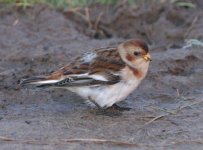bosquebirds
Birdbrain on El Camino Real
Hi, all.
I'm about to purchase a DSLR and am looking at the Nikon D70 and the Canon 20D. As a lens for birding, I'm considering the Canon 100-400 IS and the Nikon 80-400 VR. (Yes, I know that some people think that these lenses aren't ideal for birding, but I have to make some concessions to budget and the lugging-around factor.)
I understand that extenders, such as a 1.4x are not really recommended with these lenses, but can they work? Has anyone had any experience, good or bad, that might help me with mulling over this decision?
Thanks so much.
Ingrid
I'm about to purchase a DSLR and am looking at the Nikon D70 and the Canon 20D. As a lens for birding, I'm considering the Canon 100-400 IS and the Nikon 80-400 VR. (Yes, I know that some people think that these lenses aren't ideal for birding, but I have to make some concessions to budget and the lugging-around factor.)
I understand that extenders, such as a 1.4x are not really recommended with these lenses, but can they work? Has anyone had any experience, good or bad, that might help me with mulling over this decision?
Thanks so much.
Ingrid




